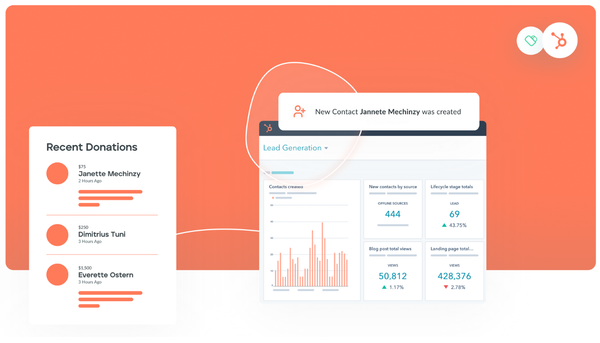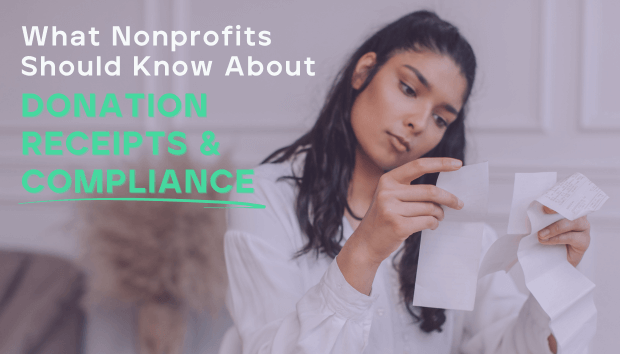Future-Proof Your Fundraising: The Significance of Customizable Donation Forms for Nonprofits
Discover the game-changing power of customizable donation forms as we explore their significance in maximizing donor engagement, streamlining data management, and optimizing mobile accessibility, enabling nonprofits to stay ahead of the fundraising curve and achieve long-lasting impact.

Staying ahead of the curve is essential for organizations to achieve their goals and make a lasting impact. As technology continues to shape the way we engage with donors and manage fundraising campaigns, customizable donation forms have emerged as a game-changing tool for nonprofits. These forms offer a unique opportunity to create a tailored giving experience, enabling organizations to maximize donor engagement, streamline data management, and optimize mobile accessibility. In this article, we will delve into the significance of customizable donation forms and why more nonprofits are embracing them as the future of fundraising.
The Power of Personalization
Customizable donation forms allow nonprofits to create a tailored giving experience for their donors. By incorporating branding elements, suggested donation amounts, and custom fields, these forms empower organizations to convey their unique message and connect with donors personally. For example, a wildlife conservation organization could customize its donation form by including various listed endangered animals and providing options for donors to contribute towards specific conservation projects. By personalizing the giving experience at this level, nonprofits can foster a stronger emotional connection with their donors, leading to increased engagement and support.
Seamless Integration and Data Management
Nonprofits understand the value of data and the importance of integration with their existing systems. Customizable donation forms, like those offered by Donately, seamlessly integrate with popular CRM platforms, such as HubSpot and Salesforce, enabling automatic data syncing and streamlining donor management processes. For instance, when a donor gives a gift through a customizable donation form, the donor's information is automatically recorded in the nonprofit's CRM, eliminating the need for manual data entry. This integration not only saves time but also ensures that nonprofits have access to accurate and up-to-date donor information, enabling them to build stronger relationships and effectively steward their supporters. Here are some key integration benefits that can greatly enhance a nonprofit's fundraising efforts.
- Enhanced Donor Relationship Management: Integration between donation forms and CRM platforms allows nonprofits to maintain a centralized database of donor information. This comprehensive view of donor data enables nonprofits to better understand their supporters, track their engagement history, and personalize communication strategies. By having access to complete and up-to-date donor profiles, nonprofits can nurture stronger relationships with their supporters and tailor their fundraising efforts accordingly.
- Streamlined Data Entry and Accuracy: Manual data entry can be time-consuming and prone to errors. With seamless integration, donor information captured through customizable donation forms is automatically synced with the nonprofit's CRM system. This automation eliminates the need for manual data entry, saving valuable time and ensuring data accuracy. Nonprofits can trust that the donor information recorded is current and reliable, enabling them to make informed decisions based on accurate data.
- Efficient Reporting and Analytics: Integration between donation forms and CRM systems allows for streamlined reporting and analytics. Nonprofits can generate comprehensive reports on donation activity, campaign performance, and donor behavior directly from their CRM platform. This integration provides valuable insights into fundraising effectiveness, identifies trends, and helps nonprofits make data-driven decisions to optimize their fundraising strategies.
- Automated Donor Stewardship: Donor stewardship is a critical aspect of nonprofit fundraising. Integration between donation forms and CRM systems enables nonprofits to automate donor stewardship processes. For example, when a donor makes a contribution through a customizable donation form, automated thank-you emails or acknowledgments can be triggered, expressing appreciation and fostering donor loyalty. Nonprofits can set up automated communication workflows based on specific donor actions, ensuring timely and personalized follow-ups without manual intervention.
Tailored Giving Options
Every nonprofit has its own unique funding needs. Customizable donation forms empower organizations to offer various giving options, such as recurring donations, suggested donation amounts, and custom giving levels. This flexibility not only enhances the donor experience but also creates a sustainable fundraising strategy. Here are some key benefits of offering tailored giving options through customizable donation forms:
- Enhanced Donor Motivation: By offering tailored giving options, nonprofits can tap into the motivations and preferences of different donors. Some individuals may feel more compelled to give when presented with specific giving levels tied to the impact they can create. Others may prefer the convenience and long-term commitment of recurring donations. By accommodating these preferences, nonprofits can inspire and motivate donors to contribute at higher levels and increase their overall giving.
- Increased Giving Frequency: Recurring donation options play a crucial role in creating sustainable fundraising strategies. By providing the option for donors to make regular, automatic contributions, nonprofits can establish a consistent stream of income. Monthly or annual recurring donations enable nonprofits to plan ahead, budget effectively, and have a more predictable financial foundation. This sustained support ensures that nonprofits can continue their vital work and achieve long-term impact.
- Accessible Giving Opportunities: Customizable donation forms that include an "Other" or "Custom Amount" field provide donors with the flexibility to contribute an amount that feels meaningful and comfortable to them. This inclusivity ensures that donors of various financial capacities can participate and support the cause. By removing barriers to giving, nonprofits can expand their donor base and attract supporters who may have otherwise been discouraged by preset donation amounts.
By leveraging the power of tailored giving options through customizable donation forms, nonprofits can increase donor contributions, establish a sustainable fundraising strategy, and build a community of loyal supporters. These options cater to donor preferences, provide flexibility, and promote ongoing engagement, ultimately driving the growth and success of nonprofit organizations.
Mobile Optimization and Accessibility
Mobile accessibility is of paramount importance in today's digital world, and nonprofits need to prioritize the mobile experience to engage donors effectively. Here's why mobile accessibility matters:
- Reach a Wider Audience: Mobile devices, such as smartphones and tablets, have become primary tools for online browsing and transactions. By optimizing donation forms for mobile devices, nonprofits can reach a broader audience and tap into the growing number of mobile users.
- Capture Spontaneous Donations: Mobile accessibility enables nonprofits to capture spontaneous donations from donors who are inspired to contribute in the moment. This responsiveness eliminates barriers to giving and encourages donors to act upon their philanthropic impulses, resulting in increased donations and donor satisfaction.
- Seamless User Experience: This seamless user experience on mobile devices minimizes friction during the donation process, reduces the likelihood of donor abandonment, and enhances overall donor satisfaction.
By embracing custom donation forms, nonprofits can convey their distinctive message, aligning it with their brand identity and campaign goals. From incorporating branding elements to tailoring suggested donation amounts and offering custom fields, customization empowers organizations to create a giving experience that stands out and fosters deeper donor engagement.
The benefits of customization extend beyond personalization. Integration capabilities streamline data management, seamlessly syncing donor information with existing systems, and reducing manual tasks. By leveraging comprehensive reporting and analytics features, nonprofits gain valuable insights into donor behavior, campaign performance, and overall fundraising success. These insights enable informed decision-making and facilitate the optimization of fundraising strategies.
Amid this fundraising evolution, Donately stands out as a comprehensive platform that offers a user-friendly interface, extensive customization options, seamless integration capabilities, and mobile optimization features. To unlock the full potential of custom donation forms and revolutionize your fundraising strategy, sign up for Donately today. Take control of your giving experiences, engage donors in a meaningful way, and make a lasting impact on the causes you serve.
The future of fundraising is waiting, and Donately is here to help you seize it.





